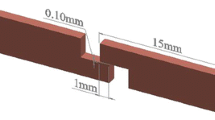Abstract
This is to predict the equation of steady-state creep strain rate and rupture life of Lead-free solder joints and to observed the fractographies of the surfaces of the fractured solder joints using the SP creep test method. In this research, Sn-4Ag, Sn-4Ag-0.5Cu, Sn-4Ag-1.0Cu and Sn-37Pb solders are used. So as to compare the Lead-free solder alloys with lead(Pb) containing solder alloys. In addition, SP creep tests are held at temperature of 30, 50 and 80¢™C. And the shear stresses used in the research are in the range of 3 to 22 MPa. The microstructure characterization and fractographic analysis of the fractured solder joints are conducted to fully describe the creep behavior of the solder joints. Increasing the testing temperature from 30 to 80°C has some effect on the fracture behavior of ternary SnAgCu solder joints during creep testing. The increased temperature made the joints more vulnerable to the brittle interfacial fracture. In addition, Sn-37Pb solder joint, dimples in the fractured surfaces are much smaller than that of the Lead-free solder joints. Also using the creep data, we obtained a prediction equation of steady-state creep strain rate and rupture life for Lead-free solder joint in this research.
Similar content being viewed by others
References
Manko, H. H., “Solders and Soldering,” 2nd Ed., McGraw-Hill, pp. 1–20, 1964.
Abtew, M. and Selvaduray, G., “Lead-free Solders in Microelectronics,” Materials Science and Engineering, Vol. 27, No. 5–6, pp. 95–141, 2000.
Hwang, J. S., “Implementing lead-free electronics,” McGraw-Hill, pp. 10–90, 2005.
Settle, M. D. and Patterson, C. C., “Lead in albacore: guide to lead pollution in Americans,” Science, Vol. 207, No. 4437, pp. 1167–1176, 1980.
Wood, E. P. and Nimmo, K. L., “In search of new lead-free electronic solders,” Journal of Electronic Materials. Vol. 23, No. 8, pp. 709–713, 1994.
Wang, C. H. and Chen, S. W., “Sn-0.7wt.%Cu/Ni interfacial reactions at 250°C,” Acta Materialia, Vol. 54, No. 1, pp. 247–253, 2006.
Jeong, M. K., Jo, S. J., Lee, H. S., Lee, A. R., Kang, C. Y., Choi, J. W., Kim, J. H., and Jeong, H. D., “Chemical mechanical planarization of copper bumps on printed circuit board,” Int. J. Precis. Eng. Manuf., Vol. 12, No. 1, pp. 149–152, 2011.
Yang, Z. J., “The evaluation of creep property for lead-free solder joints of SnAg and SnAgCu alloy system,” Ph.D. Thesis, Department of Mechanical System Engineering, Chonbuk National University, 2012.
Evans, H. E., “Mechanisms of Creep Fracture,” Elsevier Applied Science Publishers, 1984.
Evans, H. E., “Mechanisms of Creep Fracture,” Elsevier Applied Science Publishers, 1984.
Shin, C. F., deLorenzi, H. G., and Miller, A. K., “A stable Computational Scheme for Stiff Time-Dependance Constitutive Equations,” Proc. of SMIRT-4, 1977.
Author information
Authors and Affiliations
Corresponding author
Rights and permissions
About this article
Cite this article
Yang, ZJ., Yu, HS., Yang, SM. et al. Prediction of steady-state creep strain rate and rupture life for SnAg-based Lead-free solder joints by SP test. Int. J. Precis. Eng. Manuf. 14, 1245–1250 (2013). https://doi.org/10.1007/s12541-013-0169-9
Received:
Accepted:
Published:
Issue Date:
DOI: https://doi.org/10.1007/s12541-013-0169-9



